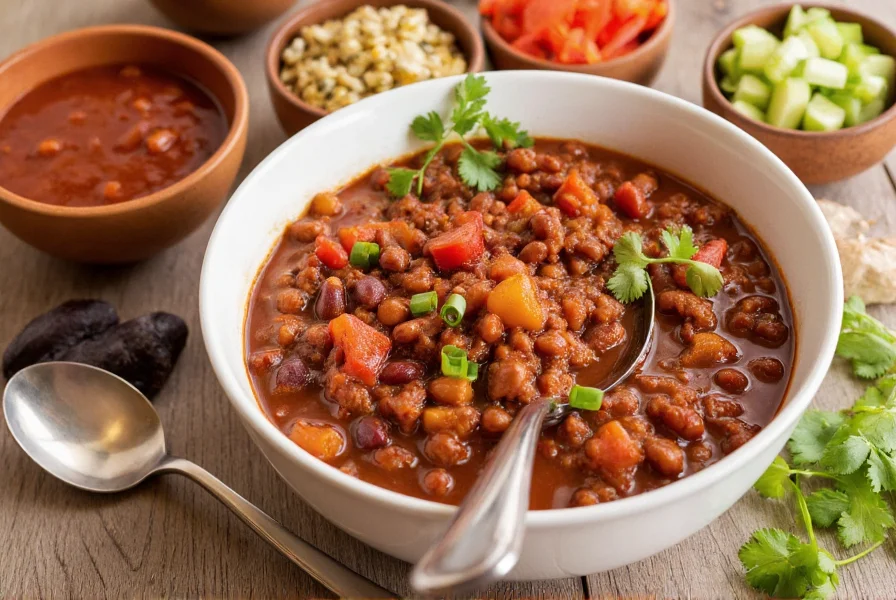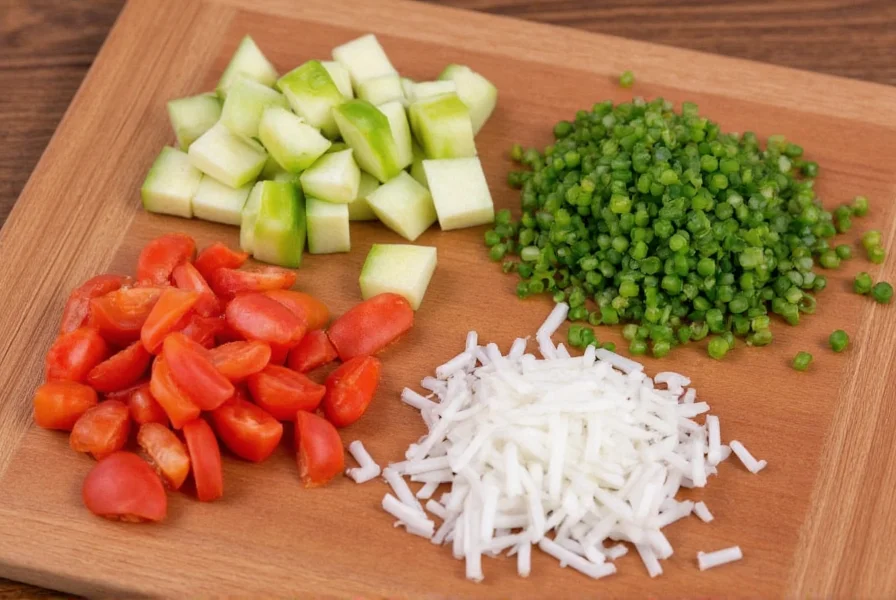When crafting the perfect bowl of chili, toppings transform a simple stew into a customizable culinary experience. The right toppings don't just add flavor—they create textural contrast, temperature balance, and visual appeal that elevates your chili from ordinary to extraordinary. Understanding which toppings complement different chili styles (Texas-style, Cincinnati, white chicken, or vegetarian) ensures every bite delivers maximum satisfaction.
Classic Chili Toppings and Why They Work
Certain toppings have become staples for good reason—they create perfect flavor pairings with chili's complex spice profile. The acidity in dairy products cuts through richness, while fresh ingredients provide brightness against deep, savory notes.
| Topping | Flavor Contribution | Best Paired With |
|---|---|---|
| Shredded cheddar | Sharpness balances heat, melts slightly | All chili types, especially beef-based |
| Sour cream | Cools spice, adds creamy texture | Spicy chili varieties, Cincinnati-style |
| Diced white onion | Sharp bite, crunchy texture | Traditional Texas chili |
| Fresh cilantro | Herbal brightness, citrus notes | White chicken chili, vegetarian options |
Regional and Creative Topping Variations
While classic toppings work universally, regional preferences and creative twists can personalize your chili experience. Cincinnati chili traditionally features oyster crackers and shredded cheddar, while Texas-style often keeps toppings minimal to honor the meat-focused stew.

Dietary-Specific Toppings
- Vegan options: Cashew cream, avocado slices, pickled red onions, nutritional yeast
- Dairy-free alternatives: Coconut yogurt, dairy-free cheese shreds, tahini drizzle
- Low-carb choices: Sliced radishes, microgreens, pumpkin seeds, extra jalapeños
Pro Tips for Perfect Chili Topping Combinations
Mastering chili toppings involves understanding flavor layering. Start with temperature contrast—always add cold toppings to hot chili just before serving. Next, consider texture balance: pair smooth elements like sour cream with crunchy components such as fried onions or corn chips.
For authentic Cincinnati chili experience, follow the "ways" system: Three-way (chili with spaghetti and cheese), four-way (add onions or beans), five-way (onions and beans). The cheese should be finely shredded to melt slightly into the hot chili while maintaining distinct texture.

Common Topping Mistakes to Avoid
Even experienced cooks make topping errors that diminish chili's potential. Adding cheese too early causes it to become rubbery rather than melting smoothly. Overloading with multiple strong flavors like blue cheese and anchovies creates sensory confusion rather than harmony.
Another frequent error involves temperature management—adding cold toppings to chili that's not sufficiently hot prevents proper melting and integration. Your chili should maintain a gentle simmer (165°F/74°C) when toppings are added for optimal results.
Seasonal Topping Adaptations
Smart cooks adjust toppings based on season. During summer months, lighter options like avocado crema and pickled vegetables provide refreshing contrast. In colder months, richer toppings like queso fresco and warm cornbread crumbles enhance comfort food qualities.
For holiday gatherings, consider a toppings bar with themed options: cranberry jalapeño relish for Thanksgiving chili or pumpkin seed pesto for autumn variations. These thoughtful touches transform standard chili into a memorable seasonal dish.
What's the best cheese for topping chili?
Sharp cheddar provides the classic tang that balances chili's richness, while Monterey Jack offers milder melting properties. For authentic Cincinnati chili, finely shredded mild cheddar works best as it partially melts into the hot dish while maintaining texture.
Can I make chili toppings ahead of time?
Most fresh toppings like diced onions, cilantro, and jalapeños can be prepped 24 hours ahead and stored in airtight containers. Dairy toppings should be added just before serving to maintain texture. For meal prep, keep components separate and assemble toppings immediately before serving for optimal freshness and texture contrast.
What toppings work best for vegetarian chili?
Vegetarian chili pairs exceptionally well with avocado slices, pickled red onions, and toasted pumpkin seeds. A dollop of lime crema (sour cream mixed with lime zest) enhances the earthy bean flavors, while microgreens add fresh visual appeal without overwhelming the delicate vegetable-based broth.
How do I prevent toppings from sinking into chili?
To keep toppings visible and textural, ladle chili to within half an inch of the bowl's rim. Add heavier items like cheese first, allowing slight melting, then layer lighter toppings like sour cream dollops and fresh herbs on top. Serve immediately while chili maintains its heat gradient, preventing toppings from fully incorporating into the base.











 浙公网安备
33010002000092号
浙公网安备
33010002000092号 浙B2-20120091-4
浙B2-20120091-4